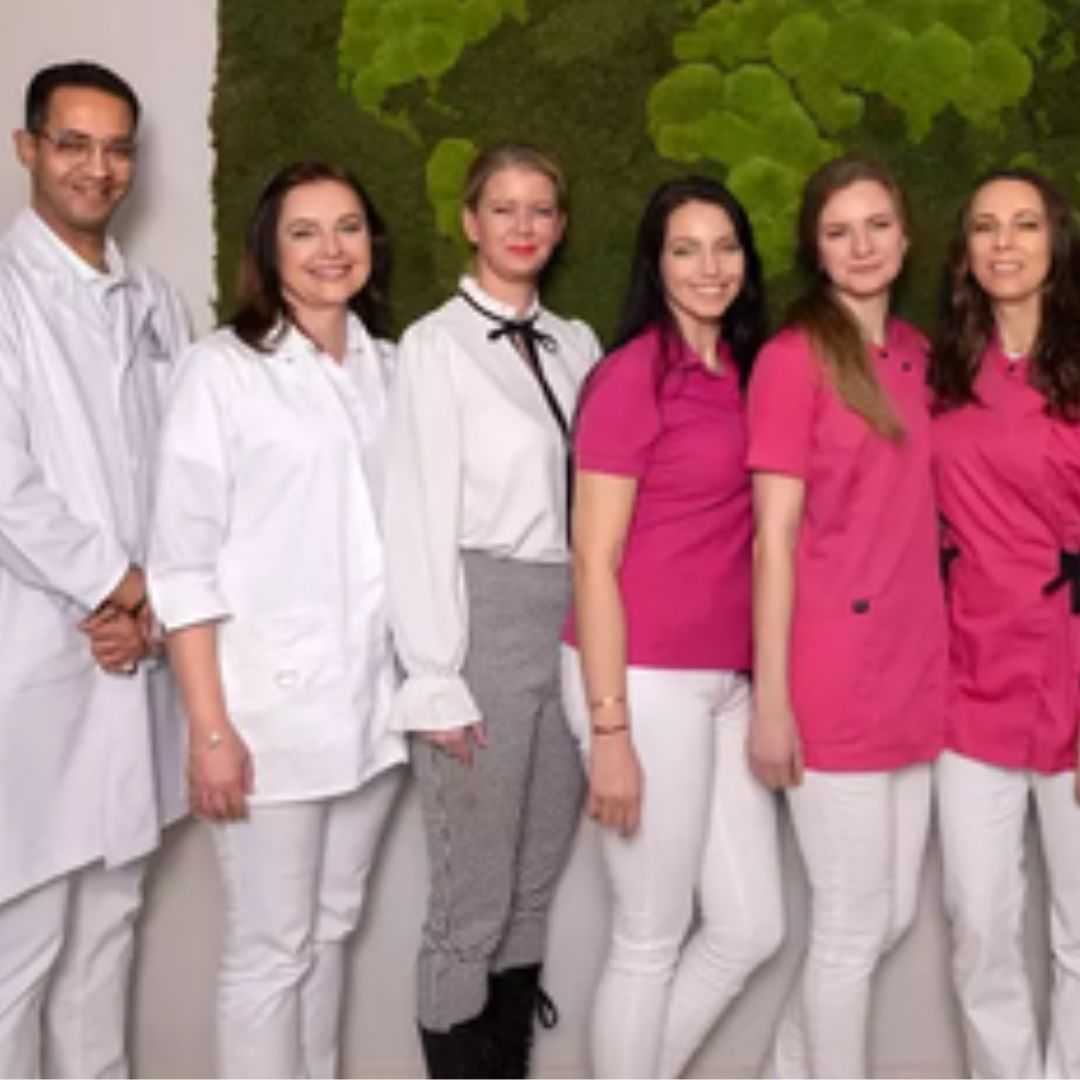.png)
Breathing Easier: Exploring Stem Cell Therapy for Lung Disease
Living with a chronic lung disease can feel like a constant struggle for air, impacting every aspect of your life. Whether it's the progressive damage of COPD, the relentless scarring of Idiopathic Pulmonary Fibrosis (IPF), or the persistent inflammation of severe asthma, the search for effective relief is often deeply personal and urgent. For many, conventional treatments manage symptoms but don't address the underlying damage. This is where the emerging field of regenerative medicine, specifically stem cell therapy for lung disease, offers a beacon of hope.
Stem cell therapy is not a magic bullet, but rather a promising treatment that harnesses the body's own healing potential. It involves introducing specialized cells into the body to help repair damaged tissues, reduce inflammation, and modulate the immune system. For lung conditions, this could mean less shortness of breath, fewer exacerbations, and an improved ability to engage in daily activities. Patients often search for "regenerative medicine for lung conditions," "stem cell treatment for lungs," or "new therapies for COPD" because they are looking beyond traditional options.
These debilitating conditions often present with common symptoms such as persistent shortness of breath, a chronic cough that just won't go away, wheezing, and chest tightness. Causes vary widely, from long-term exposure to irritants like cigarette smoke and pollution to genetic predispositions and autoimmune responses. Traditional treatments focus on managing these symptoms, but stem cell therapy aims to tackle the cellular and tissue-level damage that drives these diseases. This comprehensive guide will delve into what stem cell therapy entails, who might benefit, what to expect, and why many patients are exploring this innovative treatment abroad.
What are the common symptoms of lung disease that stem cell therapy might address?
Recognizing the symptoms of lung disease is the first step toward seeking treatment. Many patients search for "signs of lung damage" or "symptoms of COPD" to understand their condition better. While specific symptoms can vary depending on the type of lung disease, common indicators that may suggest a need for advanced therapies like stem cell treatment include:
- Persistent Shortness of Breath (Dyspnea): This is often the most debilitating symptom, making simple tasks like walking or climbing stairs incredibly difficult. It can range from mild discomfort to severe breathlessness at rest.
- Chronic Cough: A cough that lasts for weeks or months, often producing mucus (sputum), is a hallmark of many lung conditions, including COPD and bronchitis.
- Wheezing: A high-pitched, whistling sound when breathing, caused by narrowed airways.
- Chest Tightness: A feeling of pressure or constriction in the chest, sometimes accompanied by pain.
- Fatigue: The body works harder to breathe, leading to overall tiredness and reduced energy levels.
- Frequent Respiratory Infections: Individuals with compromised lung function are more susceptible to colds, flu, and pneumonia.
- Bluish Lips or Fingernails (Cyanosis): A sign of low oxygen levels in the blood, indicating severe lung impairment.
These symptoms can significantly diminish a patient's quality of life, making the search for effective, long-term solutions paramount.
What causes lung disease, and how does stem cell therapy offer a new approach?
Understanding the "causes of lung damage" is crucial for both prevention and treatment. Lung diseases stem from a variety of factors, often leading to inflammation, tissue damage, and impaired function:
- Smoking: The leading cause of COPD and a major risk factor for many other lung diseases, including lung cancer.
- Environmental Factors: Exposure to air pollution, occupational dusts (e.g., asbestos, silica), and chemical fumes can significantly damage lung tissue.
- Genetics: Certain genetic predispositions, like Alpha-1 antitrypsin deficiency, can increase the risk of emphysema.
- Infections: Severe or recurrent lung infections, such as pneumonia or tuberculosis, can leave lasting damage.
- Autoimmune Disorders: Conditions like rheumatoid arthritis or lupus can sometimes affect the lungs, leading to conditions like interstitial lung disease.
- Allergens and Irritants: Triggers for asthma and chronic bronchitis.
Traditional treatments primarily focus on symptom management—bronchodilators to open airways, steroids to reduce inflammation, and oxygen therapy for severe cases. Stem cell therapy, however, offers a "regenerative treatment for lungs" by targeting the underlying cellular mechanisms. Mesenchymal Stem Cells (MSCs), for instance, have potent anti-inflammatory properties, can modulate immune responses, and may differentiate into or stimulate the repair of damaged lung cells. They act like tiny repair crews, reducing the fire of inflammation and potentially helping rebuild damaged structures, offering a fundamentally new approach to healing rather than just managing decline.
What types of stem cell therapies are available for lung conditions?
When patients inquire about "types of stem cell treatment for lungs," they are usually referring to the source of the stem cells and their method of administration. The most common and studied type of stem cell used for lung diseases is the Mesenchymal Stem Cell (MSC). MSCs are multipotent stromal cells that can differentiate into a variety of cell types, but their key therapeutic properties for lung disease lie in their ability to:
- Reduce Inflammation: By releasing anti-inflammatory molecules.
- Modulate the Immune System: Helping to prevent immune overreactions that damage lung tissue.
- Promote Tissue Repair: Secreting growth factors that stimulate native lung cells to repair themselves.
- Combat Fibrosis: Potentially slowing down or reversing scarring in conditions like IPF.
MSCs can be harvested from several sources:
- Bone Marrow-Derived MSCs (BM-MSCs): Harvested from the patient's own bone marrow, typically from the hip bone.
- Adipose (Fat) Tissue-Derived MSCs (AD-MSCs): Obtained from the patient's fat via liposuction, often easier to harvest in larger quantities.
- Umbilical Cord-Derived MSCs (UC-MSCs): Sourced from donated umbilical cords after healthy births. These are "allogeneic" (from a donor) but are considered "immune privileged," meaning they are less likely to cause an immune rejection.
The method of administration typically involves:
- Intravenous (IV) Infusion: The most common method, allowing the cells to travel through the bloodstream to the lungs.
- Nebulization: Cells are inhaled directly into the lungs (less common but explored for targeted delivery).
- Direct Lung Injection: In rare experimental settings, cells may be injected directly into lung tissue.
The choice of cell source and administration method depends on the specific lung condition, clinic protocols, and patient suitability.
Am I a good candidate for stem cell therapy for lung disease?
One of the most frequent questions patients ask is, "Who is eligible for stem cell therapy lung?" or "criteria for lung stem cell treatment." While each clinic and treatment protocol may have slightly different requirements, general eligibility criteria often include:
- Diagnosis of a Specific Lung Disease: Patients with conditions like COPD (emphysema or chronic bronchitis), Idiopathic Pulmonary Fibrosis (IPF), severe asthma, bronchiolitis obliterans, or post-COVID lung damage are often considered.
- Disease Severity: Patients are typically not in the very early stages (where traditional treatments may still be highly effective) nor in the terminal stages where the body may be too frail to benefit. Moderate to severe but stable conditions are often ideal.
- Overall Health Status: Candidates should generally be in stable health, free from active infections, uncontrolled cardiovascular disease, or active cancers.
- No Contraindications: Certain conditions, such as pregnancy, active cancer, or severe kidney/liver failure, may disqualify a patient.
- Realistic Expectations: Patients should understand that stem cell therapy is not a cure but aims to improve symptoms, slow disease progression, and enhance quality of life.
- Ability to Travel and Undergo Procedure: For those considering treatment abroad, physical fitness for travel and the procedure itself is important.
A thorough medical evaluation, including a review of medical history, current medications, lung function tests (PFTs), and imaging (CT scans), is essential to determine suitability.
What can I expect during recovery after stem cell therapy for my lungs?
Patients often search for "stem cell lung treatment recovery time" to prepare for the post-procedure period. Unlike major surgeries, stem cell therapy for the lungs is typically a minimally invasive procedure, especially when administered via IV infusion. Therefore, the recovery period is generally straightforward:
- Immediate Post-Procedure: Patients usually rest for a few hours. Mild fatigue or a slight fever might occur, similar to how your body might react to a vaccine.
- Short Downtime: Most patients can resume light activities within a day or two. There's generally no extensive recovery period, and hospitalization is usually not required for the procedure itself, beyond the initial observation.
- Gradual Improvement: The effects of stem cell therapy are not instantaneous. The cells need time to integrate, secrete factors, and exert their regenerative and anti-inflammatory effects. Improvements are typically gradual, often noticed over several weeks to months. Patients might report less shortness of breath, reduced coughing, or increased stamina.
- Follow-up and Continued Care: Patients will typically have follow-up consultations, either in person or remotely, to monitor progress and adjust any ongoing conventional therapies. Maintaining a healthy lifestyle, avoiding lung irritants, and continuing prescribed medications are crucial for long-term benefits.
It’s like planting a seed: you don't see the plant grow instantly, but over time, with the right environment, it flourishes. Similarly, stem cells need time to work their magic within the lung environment.
What are the potential risks and side effects of stem cell therapy for lung disease?
Understanding potential "dangers of stem cell therapy lungs" and "stem cell lung treatment side effects" is a natural and important part of considering any new treatment. While stem cell therapy is generally considered safe, particularly with autologous (patient's own) cells or immune-privileged allogeneic cells (like UC-MSCs), potential risks and side effects do exist:
- Procedural Risks: As with any medical procedure involving injections or infusions, there's a small risk of infection, bleeding, or nerve damage at the collection or infusion site.
- Temporary Side Effects: Patients might experience mild, short-lived side effects such as fatigue, headache, low-grade fever, chills, or soreness at the injection site. These usually resolve within 24-48 hours.
- Immune Reaction: While rare with autologous MSCs and minimized with carefully selected allogeneic MSCs, there's a theoretical risk of immune rejection or adverse immune response, though MSCs are known for their immunomodulatory properties.
- Tumor Formation: This is a highly publicized but exceedingly rare risk, primarily associated with embryonic stem cells or induced pluripotent stem cells (iPSCs), which are typically NOT used in the therapies offered for lung conditions by reputable clinics. MSCs have a very low, if any, demonstrated risk of tumor genesis in clinical applications.
- Ineffectiveness: The treatment may not produce the desired therapeutic effect for every patient. Individual responses vary.
It's crucial to discuss these risks thoroughly with your medical provider and choose clinics that adhere to strict safety protocols and ethical guidelines.
How much does stem cell therapy for lung disease cost worldwide?
The "stem cell therapy lung disease cost" is a major consideration for many patients, often driving them to explore options abroad. Costs can vary dramatically based on the country, clinic reputation, type and source of stem cells, number of treatments required, and what's included in the package (e.g., diagnostics, follow-up, accommodation). Here's a general comparison to give you an idea of "affordable lung stem cell treatment" options:
| Country | Estimated Cost Range (USD) per treatment cycle | Notes |
|---|---|---|
| USA | $15,000 - $50,000+ | Higher costs, often limited to clinical trials or specific conditions due to FDA regulations. |
| Mexico | $7,000 - $18,000 | Popular medical tourism destination with established clinics and lower operational costs. |
| Costa Rica | $8,000 - $16,000 | Known for quality care and a growing medical tourism industry. |
| Germany | $12,000 - $25,000 | Strict regulations and high-quality medical facilities. |
| Thailand | $10,000 - $20,000 | Excellent medical tourism infrastructure, often combining treatment with a vacation. |
| India | $6,000 - $15,000 | Very competitive pricing, with growing expertise in regenerative medicine. |
| Turkey | $8,000 - $18,000 | Strategic location, modern facilities, and competitive pricing. |
These figures are estimates and can fluctuate. It's crucial to get detailed, personalized quotes from clinics.
Why should I consider traveling abroad for lung stem cell therapy?
The decision to pursue "medical tourism lung stem cell" treatment often comes down to several compelling factors:
- Cost Savings: As seen in the table above, the cost of stem cell therapy can be significantly lower in countries like Mexico, Costa Rica, or India compared to the United States or Western Europe, often without compromising on quality.
- Access to Advanced Treatments: Some therapies and protocols, particularly those involving allogeneic (donor) cells, might be more readily available or have broader application in certain countries due to different regulatory environments.
- Reduced Wait Times: In many countries, long waiting lists for specialized treatments are common. Traveling abroad can offer faster access to care.
- Privacy and Anonymity: For some, undergoing treatment away from their home country offers a greater sense of privacy.
- Opportunity for a "Healing Vacation": Combining treatment with a visit to a new country can offer a more holistic healing experience, reducing stress and potentially aiding recovery.
- Comprehensive Packages: Many clinics abroad offer all-inclusive packages that cover treatment, accommodation, transportation, and sometimes even sightseeing, simplifying the logistical burden.
For many patients facing progressive lung disease and limited options at home, the opportunity to receive potentially life-changing treatment at an accessible price point makes traveling abroad a very attractive choice.
Which countries offer the best value and expertise for lung stem cell therapy?
When searching for "top countries for lung stem cell therapy" or "reputable stem cell clinics abroad," several destinations consistently emerge as leaders in medical tourism for regenerative medicine:
- Mexico: A top destination due to its proximity to the U.S., significantly lower costs, and a growing number of reputable clinics with experienced specialists, particularly in cities like Tijuana and Cancun.
- Costa Rica: Known for its beautiful environment and high-quality medical care, offering a serene setting for recovery alongside advanced treatments.
- Panama: Emerging as a hub for stem cell research and treatment, with several clinics offering cutting-edge therapies under favorable regulatory conditions.
- Germany: While potentially more expensive than Latin American or Asian options, Germany is renowned for its stringent medical standards, advanced research, and highly skilled doctors.
- Thailand: A long-established medical tourism leader, offering world-class hospitals, experienced medical staff, and comprehensive packages that combine treatment with recovery in a hospitable environment.
- India: Offers some of the most competitive pricing without sacrificing quality, with many accredited hospitals boasting specialized regenerative medicine departments.
- Turkey: Positioned as a bridge between Europe and Asia, Turkey provides modern, well-equipped hospitals, experienced doctors, and attractive pricing for a wide range of medical procedures.
When evaluating these options, look for clinics with international accreditations, transparent treatment protocols, highly qualified medical staff, and positive patient testimonials.
What should I expect when planning my medical trip for lung stem cell treatment?
Preparing for a medical trip for lung stem cell treatment involves several key steps. Patients often search for "planning medical travel for stem cell therapy" or "travel tips for lung treatment abroad" to ensure a smooth experience:
- Initial Consultation & Medical Review: Begin by contacting medical tourism facilitators like PlacidWay or clinics directly. You'll typically need to submit your medical records, including diagnosis, treatment history, and recent test results, for a specialist to review and determine your eligibility.
- Treatment Plan & Quote: If eligible, the clinic will provide a personalized treatment plan, including the type of stem cells, number of infusions, duration of stay, and a detailed cost estimate.
- Logistics Planning: This involves booking flights, arranging accommodation (many clinics offer package deals or recommend nearby hotels), and securing any necessary visas. Ensure your passport is valid for at least six months beyond your return date.
- Pre-Treatment Preparations: Follow any instructions from the clinic regarding medications to stop, dietary restrictions, or specific tests needed before your arrival.
- Travel Insurance: Consider purchasing medical travel insurance that covers unforeseen medical emergencies and travel disruptions.
- During Your Stay: Most clinics provide a coordinator to assist with airport transfers, appointments, and local navigation. Focus on your treatment and follow all post-procedure care instructions.
- Post-Treatment Follow-up: Discuss the follow-up plan with your doctors before returning home. This might include remote consultations or local check-ups.
Working with a trusted medical tourism platform can significantly simplify this process, offering guidance and support every step of the way.
How can I ensure safety and quality when choosing a clinic for lung stem cell therapy abroad?
Ensuring "safe stem cell therapy abroad" and high quality is paramount. Here's what to look for when choosing a clinic:
- Accreditation and Certification: Look for international accreditations like Joint Commission International (JCI), which signifies adherence to rigorous patient safety and quality-of-care standards. Local government health ministry licenses are also important.
- Doctor Qualifications and Experience: Verify that the treating physicians are board-certified in relevant specialties (e.g., pulmonology, regenerative medicine) and have extensive experience specifically with stem cell therapy for lung conditions. Ask about their training and research involvement.
- Transparent Protocols: Reputable clinics will be transparent about their treatment protocols, including the type and source of stem cells, cell processing methods, administration techniques, and expected outcomes. They should provide clear consent forms detailing risks and benefits.
- Cell Sourcing and Lab Standards: Inquire about how stem cells are sourced, processed, and stored. For allogeneic cells, ensure they come from ethical, screened donors and are processed in a certified, sterile laboratory (e.g., cGMP facility).
- Patient Testimonials and Reviews: While anecdotal, genuine patient testimonials and independent reviews can offer insights into the clinic's patient care and treatment effectiveness. Look for consistency and detail in feedback.
- Post-Treatment Support: A good clinic will offer a plan for post-treatment follow-up and be available to answer questions once you return home.
- No Exaggerated Claims: Be wary of clinics that promise miraculous cures or guarantee specific results. Responsible medical providers offer realistic expectations based on current scientific understanding.
A thorough due diligence process, perhaps aided by a medical tourism facilitator, is key to making an informed and safe decision.
Can real patient stories offer hope for lung stem cell therapy abroad?
While individual results vary and stem cell therapy is not a universal cure, many patients have found significant improvement and renewed hope through these treatments. Searching for "stem cell therapy lung disease success stories" or "patient reviews lung stem cell" often reveals touching accounts of improved quality of life.
Imagine a patient, once tethered to an oxygen tank, gradually being able to walk further, enjoy time with grandchildren, or simply breathe without constant struggle. These are the kinds of stories that fuel the belief in regenerative medicine. For example, a patient with severe COPD, struggling with daily activities, might report that after therapy, their lung function tests show modest improvements, but more importantly, their daily energy levels are up, and they can walk across a room without gasping for air. Another individual with IPF might find the progression of their disease has slowed, giving them precious extra time and improved comfort.
These stories often speak to a return to a semblance of normalcy, a rekindling of hobbies, and a profound improvement in overall well-being. It’s not just about numbers on a diagnostic test; it's about the feeling of a flickering candle getting brighter, allowing life to be lived more fully. While not every story is a dramatic recovery, the incremental gains in breathing capacity and reduction in symptoms can be life-changing for someone who has exhausted other options.
Take the Next Step with PlacidWay
Ready to explore treatment options abroad? Discover top clinics, compare prices, and get a free quote tailored to your needs with PlacidWay.
Stem Cell Therapy Abroad










Share this listing